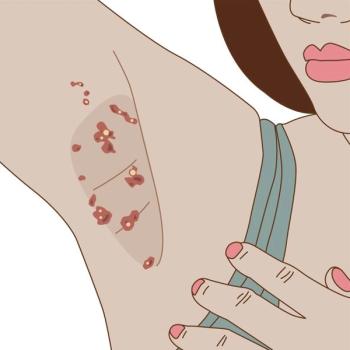
Tapinarof Cream 1% Demonstrates Sustained Disease Control in Adults, Children with Atopic Dermatitis

AAD 2025: New analysis of the ADORING 3 trial showed tapinarof maintains low disease activity in patients with AD for an average of 79.8 days post-treatment.
While many topical treatments provide temporary relief for atopic dermatitis (AD), disease recurrence upon discontinuation remains a significant concern. A new analysis of the phase 3
The analysis, presented at the 2025 American Academy of Dermatology (AAD) Annual Meeting in Orlando, Florida, indicated that adults and children aged 2 years and older with AD who achieved complete skin clearance maintained low disease activity during treatment‐free intervals averaging approximately 80 days.
The ADORING 3 study was a 48-week open-label, long-term extension trial evaluating the durability of disease control following treatment with
The study aimed to determine the duration of disease control during treatment-free periods and to evaluate symptom severity using the Eczema Area and Severity Index (EASI) and Peak Pruritus Numerical Rating Scale (PP-NRS).
According to the results, following discontinuation of tapinarof cream, patients maintained low disease activity for a mean of 79.8 consecutive days. At the end of this treatment-free interval, researchers reported 84% of participants had a vIGA-AD score of 2 (mild disease), with a mean EASI score of 3.4 and a mean weekly PP-NRS score of 2.9, suggesting sustained symptom relief.
Jonathan Silverberg, MD, PhD, MPH, a principal investigator of the study, noted in an accompanying press release, "For patients with
The analysis also showed that tapinarof cream was generally well tolerated. The most frequently reported treatment-emergent adverse events (TEAEs) included folliculitis (12.1%), nasopharyngitis (6.9%), and upper respiratory tract infections (6.9%). Discontinuation due to adverse events was uncommon (2.6%). Reported events of special interest, including contact dermatitis and
The findings from ADORING 3 suggest that tapinarof cream could offer a new approach to AD treatment, allowing for extended symptom relief without continuous application. By reducing the frequency of treatment while maintaining disease control, this approach may enhance patient adherence and overall satisfaction with therapy.
“These data reinforce the efficacy of [tapinarof] cream in atopic dermatitis, including the durability of effect among patients in the study, including children as young as 2 years old,” Juan Camilo Arjona Ferreira, MD, head of research and development and chief medical officer at Organon, said in a press release. “Knowing the profound impact that AD can have on the lives of patients, and oftentimes their caregivers, the possibility to receive over 2 months of relief without needing to reapply treatment is meaningful and speaks to our mission of creating a healthier every day.”
Tapinarof cream, 1% was
Stay tuned to Patient Care© Online’s
For more 2025 AAD Meeting coverage, please click here.
References:
- New analysis of Organon’s VTAMA® (tapinarof) cream, 1% phase 3 data shows atopic dermatitis disease activity remained low after treatment-free interval in adults and children 2 years of age and older. News release. Organon. Published March 8, 2025. Accessed March 8, 2025.
https://www.organon.com/news/new-analysis-of-organons-vtama-tapinarof-cream-1-phase-3-data-shows-atopic-dermatitis-disease-activity-remained-low-after-treatment-free-interval-in-adults-and-children-2-years-of-ag/ - Silverberg J, Bissonnette R, Stein Gold L, et al. Tapinarof cream 1% once daily: Maintenance of low disease activity including pruritus through end of the treatment-free interval in a long-term extension trial in patients down to 2 years of age with atopic dermatitis. Poster presented at the American Academy of Dermatology Conference 2025. March 7-11, 2025. Orlando, Florida.
Newsletter
Enhance your clinical practice with the Patient Care newsletter, offering the latest evidence-based guidelines, diagnostic insights, and treatment strategies for primary care physicians.


















































































































































































































































































